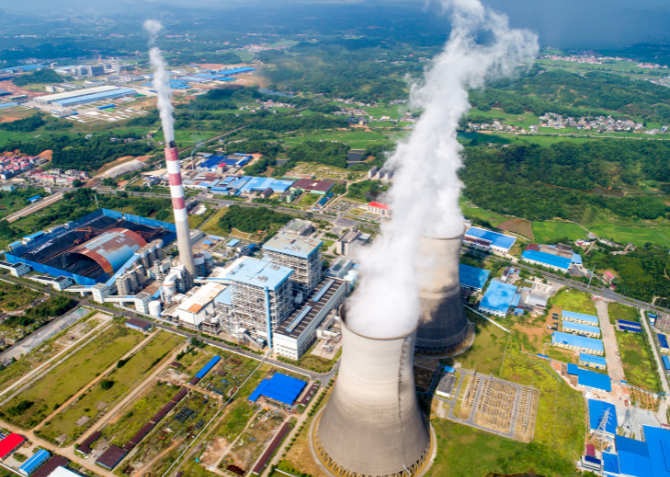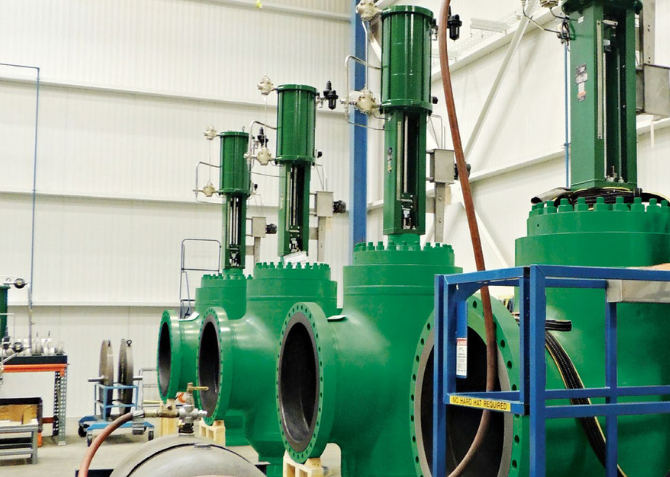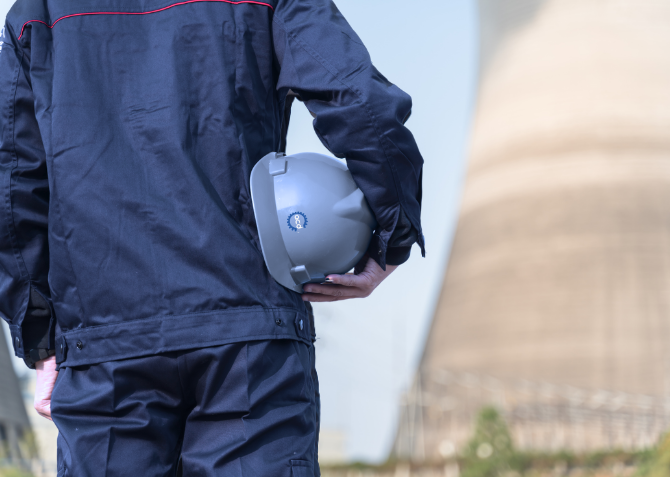(866) 700-9858
Powering the Future
THERMAL POWER PLANTS
- HOME
- > THERMAL POWER PLANTS
Reliable and Efficient Energy Generation
Thermal power plants are conventional power plants that generate electricity by transforming heat energy into electrical energy. The heat energy can be derived from different sources such as coal, diesel, biofuel, solar energy, nuclear energy, etc.
Components of a Thermal Power Plant
A thermal power plant consists of the following components:
- Fuel Handling: The fuel is transported to the power plant and stored in large silos or bunkers. From there, it is fed into the boiler.
- Boiler: The fuel is burned in the boiler to produce heat. The heat is used to create steam, which is then used to drive the turbine.
- Turbine: The steam from the boiler is directed onto the blades of the turbine, causing it to spin.
- Generator: The spinning turbine turns a shaft inside the generator, which produces electricity.
- Cooling: The steam that has passed through the turbine is cooled and condensed back into water, which is then returned to the boiler to be used again.
Is Thermal Power Generation a Clean Power Generation Method?
Thermal power generation is not considered a clean power generation method. It is a fossil fuel-based power generation method that produces a significant amount of greenhouse gases, including carbon dioxide, sulfur dioxide, and nitrogen oxides. These gases contribute to global warming and air pollution, which can have severe environmental and health impacts.
How Does Thermal Power Generation Work?
Thermal power generation works by converting heat energy into electrical energy. The process involves burning fossil fuels, such as coal, oil, or natural gas, to heat water and produce steam. The steam is then used to turn a turbine, which generates electricity. The process of thermal power generation is relatively simple, but it has significant environmental and health impacts.
How Acd America Corporation has helped improve the processes in this area?
One of the solutions to improve these processes has been through Fisher's product line. Fisher Control Valves are a type of process control equipment that can help improve the process of a power thermal plant. These valves are designed to regulate and isolate processes with certainty, making them highly reliable flow control technologies. Fisher HP series control valves are single-port, high-pressure, globe- or angle-style valves with metal seats, cage guides, and push-down-to-close valve plug action. These valves are designed for high-pressure applications in process control industries such as power generation, hydrocarbon production, chemical processing, and refining.
To increase the thermal efficiency of a steam generator heat rate of a unit, a reheater is incorporated in challenging application and requires a reheat temperature control. Fisher reheat spray valves provide optimal hot temperature control and high rangeability, while the damaging effects of cavitation.
Last Insights About Thermal Power Generation
Thermal power generation is a widely used method of power generation that has significant economic and environmental impacts. While it is a reliable and cost-effective method of power generation, it is not considered a clean power generation method. The process of burning fossil fuels to generate electricity produces a significant amount of greenhouse gases, which contribute to global warming and climate change. Therefore, it is essential to explore alternative methods of power generation that are more sustainable and environmentally friendly.
Explore our insights and join us in shaping the future of energy.
| Worldwide Statistics on Thermal Power Generation |
| Global power generation: In 2022, global power generation rose by 2.3%, in line with its historical trend (+2.5%/year over 2010-2019) |
| Coal usage: Fossil fuels remain the greatest source of electricity generation worldwide. In 2022, coal accounted for roughly 35.8% of the global power mix, while natural gas followed with a 22% share |
| Energy supply: In 2020, the world’s total energy supply was 14,282 Mtoe. Coal accounted for 26.9%, oil for 31.6%, natural gas for 22.8%, nuclear for 4.9%, hydro for 2.5%, biofuels and waste for 9.3%, and other for 2.0% |




